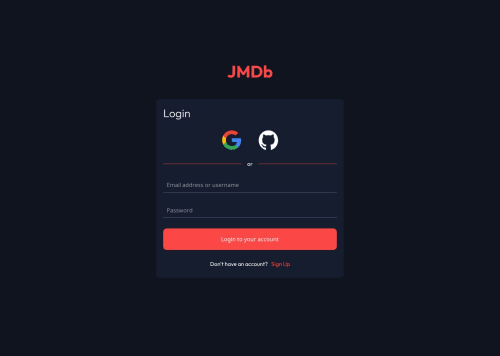Entertainment App - React, NextJS, Authentication, APIs

Solution retrospective
Disclaimer: There is some unfinished content still within this project. If you come across something that looks clearly unfinished, such as an empty page, then I likely already know about it. If you come across bugs or errors, however, please feel free to let me know in the comments as I am sure some things were missed.
I am proud of being able to implement as much as I was able to do. I spent more time on this project than I wanted to, but I learned a lot which is what it's all about. This was the first project where I did all the backend code myself (authentication, api data fetching, etc). Figuring out the authentication and implementing additional custom auth logic or custom fetch logic felt good.
Things I would do differently next time would definitely be to follow a more TDD approach. I went back and forth a lot with bugs because there were things that would work in local, but not work in prod. There were things that worked fine, but then upon adding new code to implement a new feature, those things that worked previously, would be broken now and I wouldn't notice until I looked around on prod. There was just a lot of things during the process that I think could've been avoided had I followed the TDD approach.
What challenges did you encounter, and how did you overcome them?Sorting and filtering the fetch data proved difficult in certain parts. The part of this that I probably struggled with the most, was appending results to the pages when clicking the view more button. I had an issue where when clicking the view more button, it would replace the results on the page instead of appending to it. This took some trial and error to make work properly.
Implementing OAuth was a bit difficult as well due to never having done it before. I spent lots of time on stack overflow and talking to other people to figure out what I was doing wrong. Most of the time, the problems I had were just due to dashboard configurations in my google cloud profile and clerk authentication dashboard, not necessarily anything code related.
What specific areas of your project would you like help with?I feel like I wrote a lot of code with this project, I'm sure a lot more than necessary. I have plans to go back and heavily refactor my code as best as I can to adhere to better standards. There is a lot in here that is repeated, so centralizing certain pages/components/styling to cut down on project size is in the plans.
There isn't anything that I really need help with, but if you have any suggestions or ideas then feel free to leave a comment!
Please log in to post a comment
Log in with GitHubCommunity feedback
- @saularanguren
Good job bro
Join our Discord community
Join thousands of Frontend Mentor community members taking the challenges, sharing resources, helping each other, and chatting about all things front-end!
Join our Discord